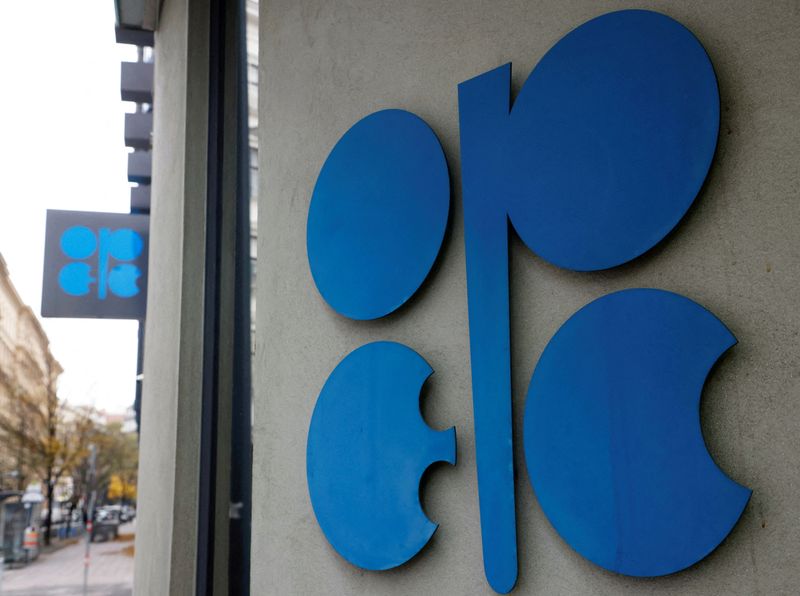Commodities
Oil steadies as OPEC+ restraint balances interest rate concerns

By Alex Lawler
LONDON (Reuters) -Global oil prices steadied on Tuesday as the prospect of OPEC+ maintaining oil supply curbs at its June 2 meeting and hopes of strong U.S. summer fuel demand balanced concern about higher-for-longer U.S. interest rates.
On Monday, oil rose over 1% in muted trade owing to public holidays in Britain and the U.States, with hopes of strong fuel demand with the start of the U.S. summer driving and vacation season providing support.
The July contract for , the global benchmark, rose 12 cents, or 0.1%, to $83.22 a barrel by 1155 GMT. U.S. West Texas Intermediate (WTI) crude was at $78.79, up $1.07, or 1.4%, from Friday’s close, having traded through a U.S. holiday to mark Memorial Day without a settlement.
“Oil has been in a recovery mode lately, perhaps driven by expectations of strong fuel demand due to the start of the summer driving and vacation season,” said Charalampos Pissouros, analyst at broker XM.
Worries over U.S. interest rates remaining elevated for a longer period contributed to a weekly loss for crude last week. Higher rates boost the cost of borrowing, which can dampen economic activity and demand for oil.
“Despite the indisputably brighter mood seen in the last two days, interest rate concerns will most plausibly act as a (brake) on further attempts to send oil prices meaningfully higher in the immediate future,” said Tamas Varga of broker PVM.
Nonetheless, despite the general view that high interest rates could result in softer oil demand growth, “real-time mobility data indicates oil demand growth is still broadly healthy,” UBS analyst Giovanni Staunovo wrote in a client note.
On the air travel front, U.S. seat numbers on domestic flights for May rose by 5% month on month and almost 6% year on year to slightly above 90 million, data from flight analytics firm OAG showed, surpassing 2019 levels.

Coming up is the online meeting of OPEC+ producers on Sunday, where traders and analysts are expecting 2.2 million barrels per day of voluntary production cuts to stay in place.
“It is a fair assumption that no changes in production levels will be forthcoming,” PVM’s Varga added regarding the OPEC+ meeting.
Commodities
Oil prices rise; U.S. crude inventories plunge, Russia-Ukraine truce eyed
Commodities
India’s Reliance to stop buying Venezuelan oil over US tariffs, sources say
Commodities
Oil prices climb on Venezuela supply worries

 Forex3 years ago
Forex3 years agoForex Today: the dollar is gaining strength amid gloomy sentiment at the start of the Fed’s week

 Forex3 years ago
Forex3 years agoUnbiased review of Pocket Option broker

 Forex3 years ago
Forex3 years agoDollar to pound sterling exchange rate today: Pound plummeted to its lowest since 1985

 Forex3 years ago
Forex3 years agoHow is the Australian dollar doing today?

 Cryptocurrency3 years ago
Cryptocurrency3 years agoWhat happened in the crypto market – current events today

 World3 years ago
World3 years agoWhy are modern video games an art form?

 Commodities3 years ago
Commodities3 years agoCopper continues to fall in price on expectations of lower demand in China

 Economy3 years ago
Economy3 years agoCrude oil tankers double in price due to EU anti-Russian sanctions























